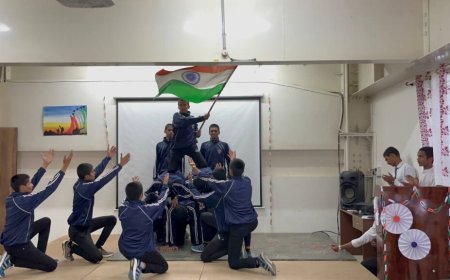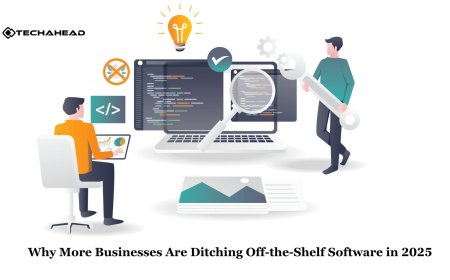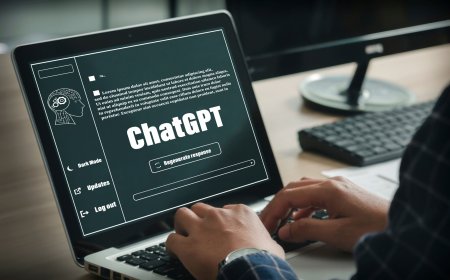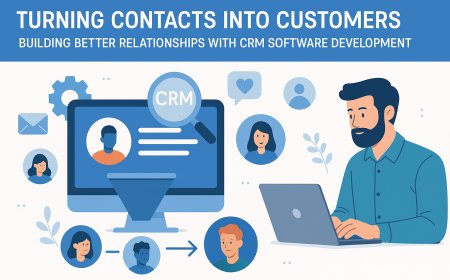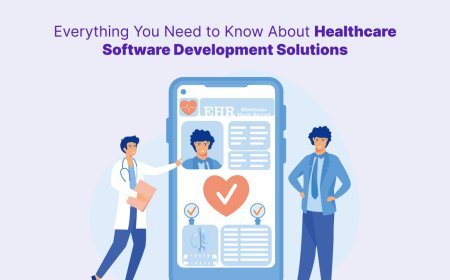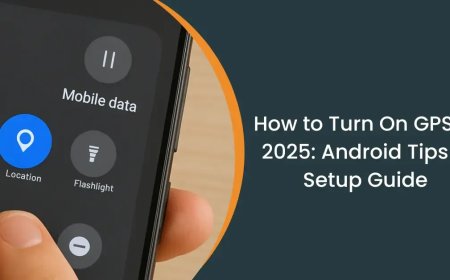The Ultimate Guide to Choosing the Best Android App Development Company in Kuwait
This comprehensive guide examines why partnering with the right firm can define your app’s success, and provides actionable steps to evaluate potential providers, manage development, and launch with confidence.

In todays digital-first world, businesses in Kuwaitfrom retail and finance to healthcare and logisticsare turning to Android mobile applications to connect with consumers and streamline operations. Selecting the right android app development company is pivotal, and choosing a local android app development company in Kuwait brings both cultural relevance and market insight. This comprehensive guide examines why partnering with the right firm can define your apps success, and provides actionable steps to evaluate potential providers, manage development, and launch with confidence.
Understanding the Need: Why Every Kuwait Business Needs Android Apps
Smartphone adoption in Kuwait is among the highest in the Gulf region, with Android devices accounting for a significant portion of market share. This widespread reach means Android apps offer:
-
Primary channel to reach Kuwait users: with home screen presence and push notifications
-
Payment and commerce convenience: integration with KNET, mada, visa/micro-transaction wallets
-
Effective localization: Arabic-English bilingual UI, RTL support, culturally aligned design
-
Enhanced data capture: loyalty, geolocation for branch/mall proximity, user behavior tracking
-
Differentiation from mobile websites: offline features, performance, and platform-level access (camera, sensors, notifications)
A well-designed Android app transforms business reach, optimizes operations, and fuels customer engagementif built smartly.
Why Choose a Local Android App Development Company in Kuwait
Cultural Understanding & Language
International firms may not reflect Kuwaiti styles, color schemas, or phrasing nuances. Local teams understand the expectations of Gulf consumersfrom Arabic naming conventions to religious and cultural sensitivities.
Compliance and Payment Integration
Kuwait-specific integrations like telecom regulations, KNET certification, mada, consumer protection, and privacy rules require local expertise to avoid delays or platform rejection.
Faster Iterations & Time-to-Market
With the same timezone, local partners enable quick communication, agile sprints, and swift design reviewall contributing to faster MVP launches.
Established Access & Networks
Local firms often have prebuilt integrations with banks, SMS gateways, logistics providers, loyalty platforms, making architecture less expensive and faster.
Lower Risk and Higher Accountability
A Kuwait-based company is easier to manage, visit, and coordinate on long-term service contracts, maintenance, and version upgrades.
Key Capabilities to Look for in a Top Android App Development Company
Cross-Platform & Native Technology Expertise
Assess whether you need native Java/Kotlin development or cross-platform frameworks like Flutter/React Native. Native apps maximize performance and offline capability; cross-platform speeds time and lowers cost.
Backend, APIs, and Scalability
A strong dev partner integrates APIs and cloud infrastructure using Node.js, Python, .NET, or Javabuilding scalable, secure backends and logical data flows.
UI/UX Design with Localization
Look for companies showing RTL interface design, Arabic-first flows, appropriate icons, and QA on Arabic script alignment and form usability.
Quality Assurance & Testing Infrastructure
Test coverage should include Arabic keyboards, screen permutations, RTL display tests, automated regressions, smoke tests, performance metrics, and regular Play Store deployment.
Security & Data Compliance
Ensure the business adheres to encryption standards, mobile OS best practices, privacy policy declarations, and data residency compliance.
DevOps Capability
CI/CD pipelines ensure every push is tested, build-signed, and Play-Store-readyminimizing delays, errors, and manual intervention.
Post-Launch Support & Maintenance
Look for retainer offeringspatches, OS upgrades, feature enhancements, seasonal updates, or scaling changes.
Step-by-Step Guide to Choosing and Working with a Partner
Defining Your Project Requirements
Be clear on project scope:
-
App category: e-commerce, loyalty, fintech, education, logistics
-
Core functions: catalog browsing, account, payments, loyalty points, chat, user profiles, push notifications
-
Platforms & devices: Phone only, tablet, Android TV?
-
Budget and timeline: range expectations and milestones
-
Growth roadmap: potential scope for SaaS, AI, analytics, AR features
Market Research & Company Shortlisting
Research firms by portfolios, references, tech specs, and sector relevance:
-
Seek previous apps in Gulf region, Play Store reviews, and user feedback
-
Ask for case studies on app features and business results
-
Check team size, process transparency, communication clarity
-
Verify capability in Kotlin, Jetpack Compose, Flutter, or native tooling
Evaluating Expertise and Cultural Fit
During calls or in-person meetings, ask:
-
How do they structure sprints and stakeholder reviews?
-
What testing strategies are implemented?
-
How is Arabic localization handled?
-
How do they manage scope changes, warranty support, and compliance?
Observe communication style, technical responses, and cultural understandingthese reveal partnership alignment.
Requesting Proposals and Comparing Offers
Seek proposals that include delivery model (fixed price vs T&M), milestones, code coverage strategy, support terms, pricing, and cost assumptions.
Evaluate quotes based on Deliverables vs Price Tradeoff, team fit, and post-launch continuity.
Signing Agreements and Joint Planning
Contracts should include:
-
Scope, timeline, delivery phases
-
IP assignment, confidentiality, code ownership
-
Quality warranties and defect handling timelines
-
Support, maintenance, and upgrade SLAs
-
Payment linked to sprints or milestones
-
Communication cadences and escalation clauses
Kick off with a vision workshop, UX roadmap, user stories, backlog, and design prototypes.
Sprint Execution, Design, and QA
-
Bi-weekly sprint cycles with demos
-
Early review of Arabic UI, design assets, color choices
-
Device compatibilitysmall, medium, large screen, low-end devices
-
Automated and manual test passes before each new feature
Review and Pilot Beta
Launch within Play Store alpha/beta groupsgather analytics, crash data, feedback quickly for adjustments before production release.
Launch and Growth
Ensure:
-
Google Play Store listing with Arabic metadata
-
Marketing banners, splash screens, multilingual onboarding
-
Push scheduling, user retention flows, Launch day support
Monitoring Growth and Planning Future Features
Core Metrics
-
Downloads, active users, retention, session times, feature usage
-
Monetization: purchases, ads, subscriptions, lifetime value
-
Performance and stability: crash rate, latency, UX flows
Use these insights to define new sprints and enhance ROI.
Feature Roadmap
Potential additions:
-
AI chat support
-
Loyalty programs with smart offers
-
IoT features (smart home, tracking)
-
AR product previews
-
Social sharing, community sections, push campaigns
Consider implementing tuning phases or modular architecture to support scaling.
FAQs
Whats the average cost to build a medium complexity Android app?
Expect costs between USD 25K60K depending on features like login, payments, chat, backend, analytics. Complex apps involving AI, AR or heavy integrations may cost upwards of USD 80K120K.
How long does development take?
Simple apps (profile, content, chat) take 1014 weeks; complex fintech, e-commerce or IoT apps can take 57 months or longer.
Should we choose Flutter or native development?
Flutter offers faster development and lower cost, but native delivers better performance and offline capabilities. Choose based on feature complexity, performance needs, offline usage.
Do I need Arabic UI and RTL support?
Yes. An Arabic-first interface is essential in Kuwait. Elements like date pickers, forms, menu orientation, call-to-action prompts must be proper for Arabic UX.
Can I upgrade the app later with chat or analytics?
Yes. A modular architecture allows adding features like AI chat, analytics dashboards, smart notifications, or loyalty engines after launch.
Conclusion
Choosing the right android app development company in Kuwait is one of the most strategic decisions a business can makeimpacting user adoption, cost control, market agility, and long-term app evolution. Local partners offer valuable advantages from cultural fluency and payment integration to faster iteration and network relationships. By prioritizing technical competence, design quality, Arabic UX, agile methods, and ongoing support, you can ensure your Android app becomes an assetdriving engagement, revenue, and brand trust.
Follow these steps:
-
Define clear objectives and requirements
-
Shortlist based on portfolios, technical skills, and cultural insights
-
Rigorously evaluate through meetings and proposal reviews
-
Launch with quality sprints, Arabic testing, Play Store readiness
-
Measure performance and scale strategically
The mobile revolution in Kuwait is here. With the right Android development partner, your app can succeed todayand evolve with tomorrows digital landscape.










